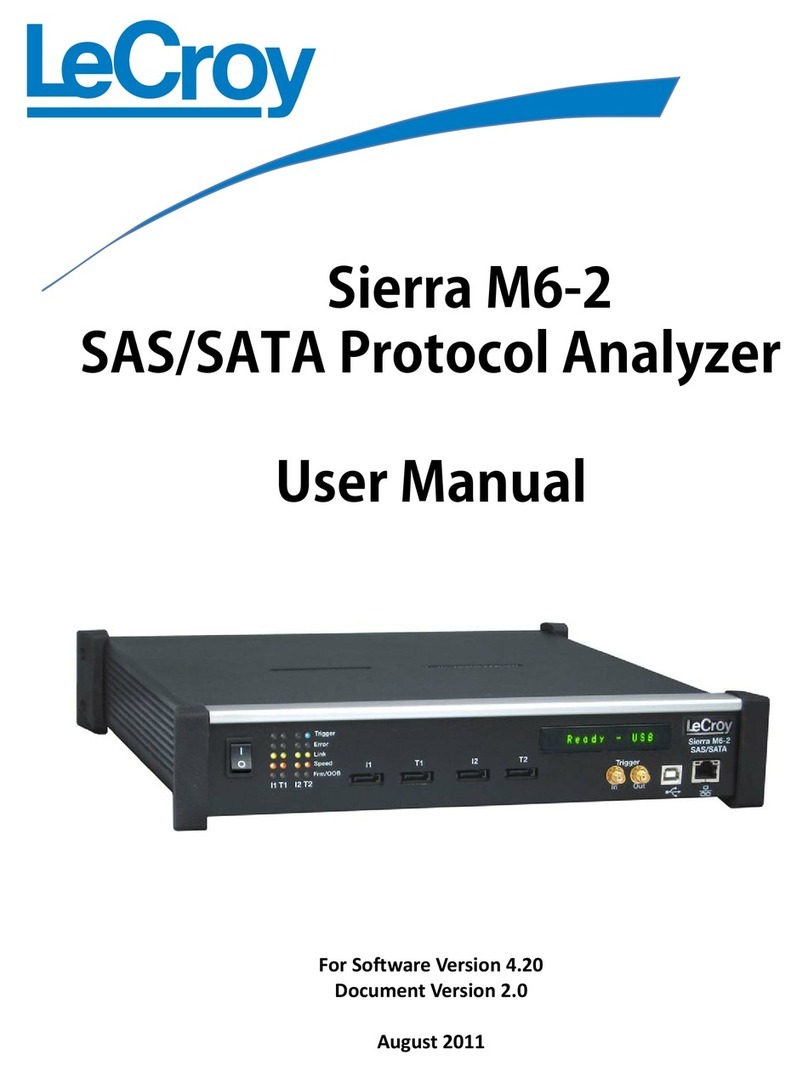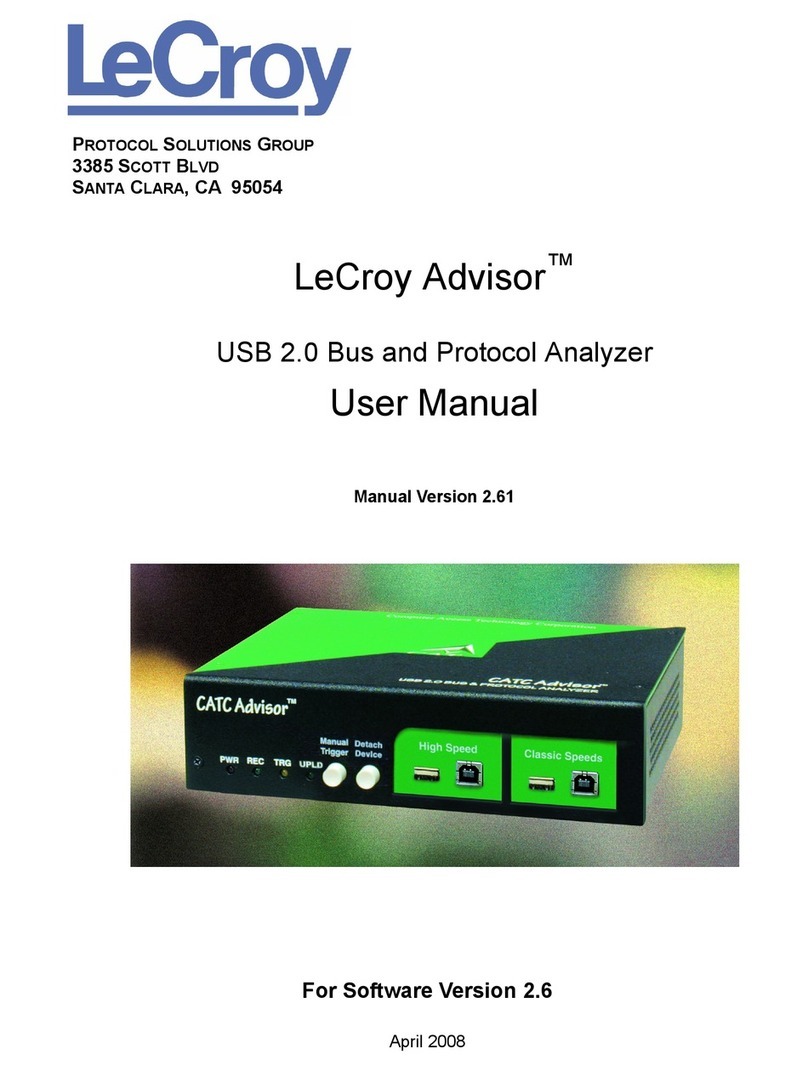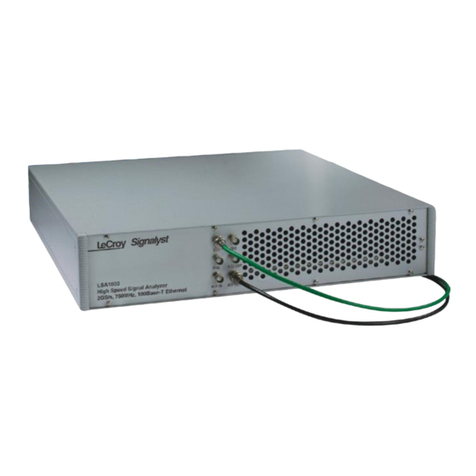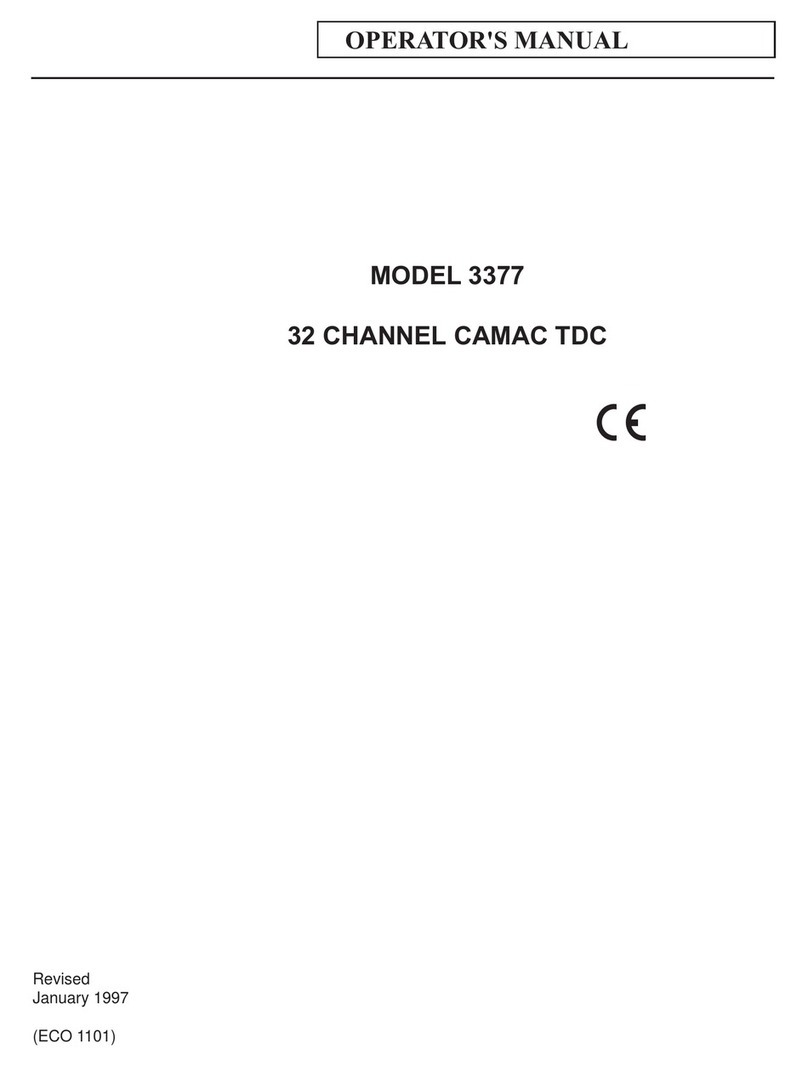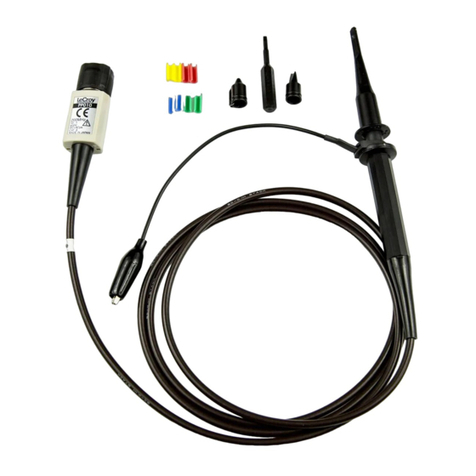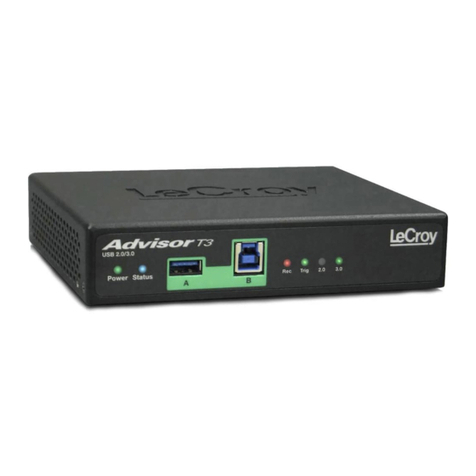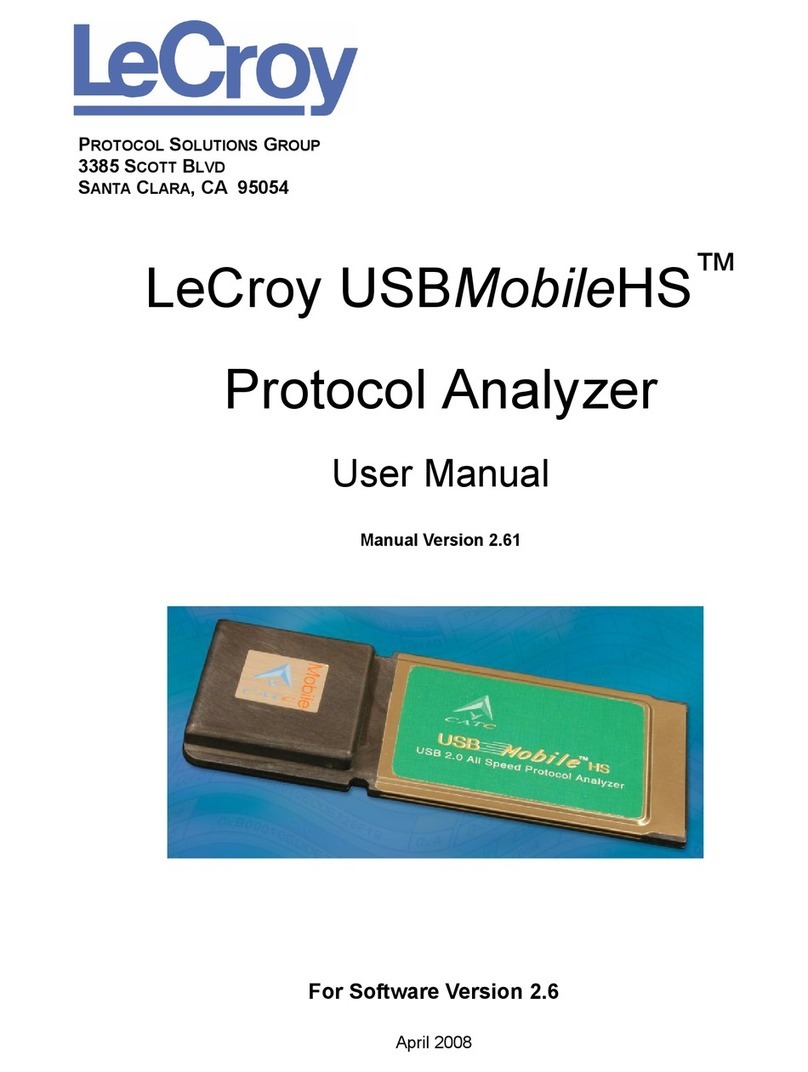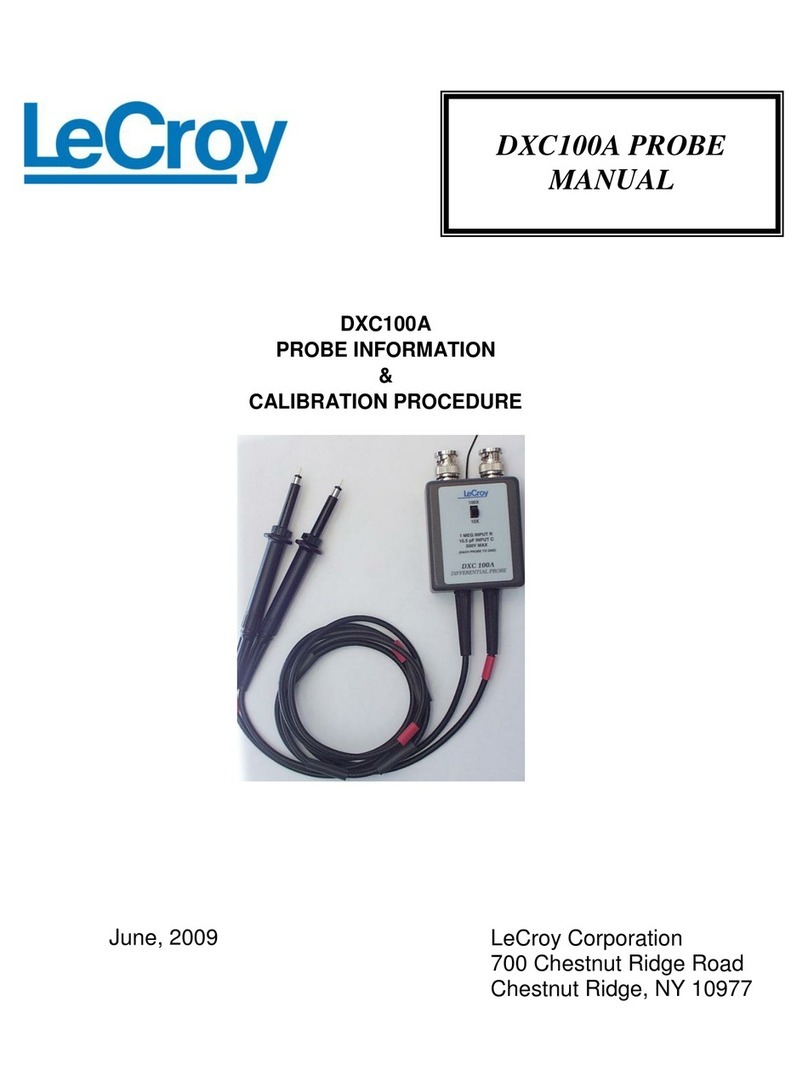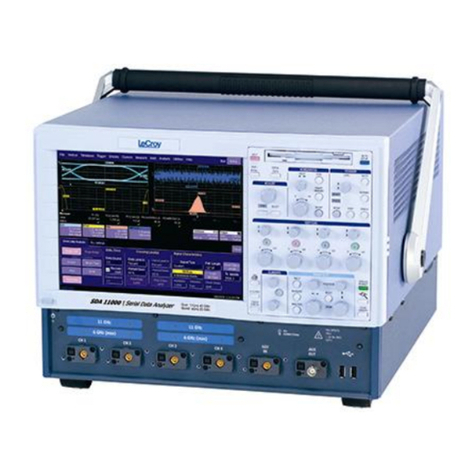
LY ISSUED: January 2000 AP034-OM-E Rev D
$3$FWLYH3UREH
Incorrect Frequency Response........................................................................................5-2
DC Errors.........................................................................................................................5-3
Poor Common Mode Rejection.......................................................................................5-3
Returning a Defective Probe ....................................................................................................... 5-4
Replacement Parts ...................................................................................................................... 5-5
Matching Procedure for ÷10 Plug-On External Attenuator .......................................................... 5-8
Equipment Required .....................................................................................................................5-8
Procedure......................................................................................................................................5-9
Performance Verification
Test Equipment Required .............................................................................................................6-1
Preliminary Procedure...................................................................................................................6-3
Procedure......................................................................................................................................6-3
Check Gain Accuracy.......................................................................................................6-4
Check High Frequency CMRR.........................................................................................6-5
Check Low Frequency CMRR..........................................................................................6-8
Performance Verification Test Record........................................................................................6-11
Adjustment Procedure
Introduction .................................................................................................................................. 7-1
Test Equipment Required .............................................................................................................7-2
Preliminary Procedure...................................................................................................................7-4
Procedure......................................................................................................................................7-7
Adjust Coarse DC Balance (R226) ..................................................................................7-7
Adjust Fine DC Balance (R304).......................................................................................7-8
Adjust Low Frequency CMRR (R7)..................................................................................7-9
Adjust Offset (R330) ......................................................................................................7-11
Adjust Gain (R322C)......................................................................................................7-13
Adjust Final Attenuator Compensation (C17) ................................................................7-14
Adjust Final Attenuator CMRR (C18A)...........................................................................7-15
Assemble Probe and Amplifier.......................................................................................7-16
Attenuator Matching and Final Check............................................................................7-17
